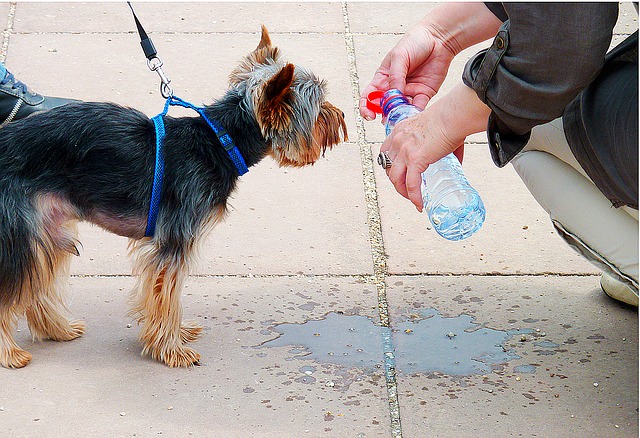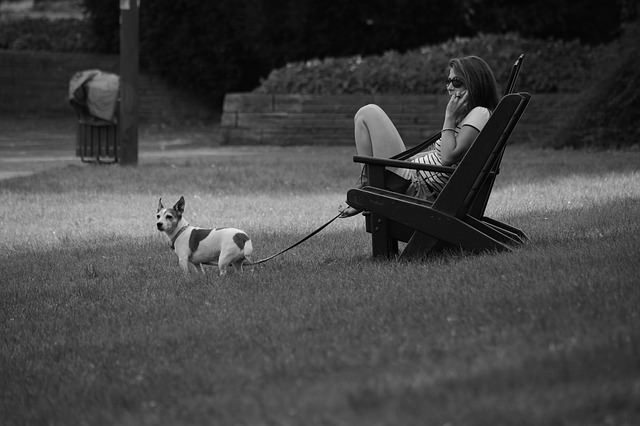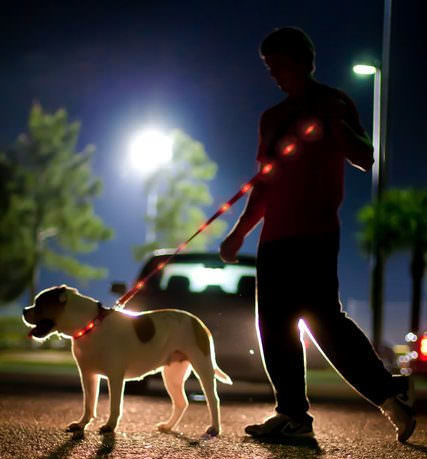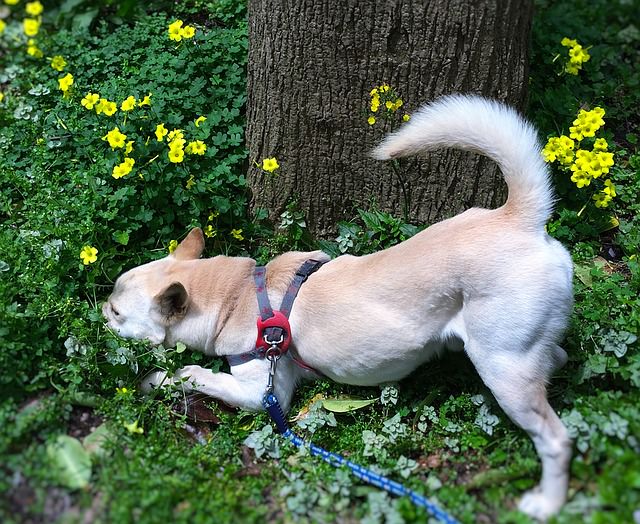Whether you enjoy a jaunt around the neighborhood, a strenuous mountain hike, or a carefree stroll on the beach, your favorite dog walking route can begin to feel as familiar as your own backyard.
But it is important to always stay vigilant and alert when out with your pup. Weather conditions, wildlife, other dogs, and even fellow humans can pose unexpected hazards.
Follow these 7 tips to ensure that every walk you take with your furry BFF is safe and enjoyable for both of you!
1. Be Prepared

No one wants to carry an entire dufflebag of doggy paraphernalia when they go walking, but there are a few items that should be considered safety essentials. Every dog walker should carry an animal deterrent spray. The cans are small and portable – similar to pepper spray. Rather than a harmful irritant, they contain citronella designed to stun and deter potentially threatening dogs and wildlife.
Are there bears in your neck of the woods? Consider carrying bear spray, too! It is much more potent and can spray up to 12 feet.
If you are hiking on a hot day or going further than usual, pack a collapsible dog bowl, bottled water and some high-energy snacks. Walking at night? Protect yourself and your dog from cars with reflective clothing and/or LED safety lights.
2. Be Present

When it comes time for your daily walk, do your best to set aside everything else and just be present with your pup. Leaving the ear buds behind and keeping your cellphone in your pocket will make for a more fun, relaxing experience, and allow you to be aware of your surroundings. Without electronic distractions you are more likely to spot potential hazards in your path.
3. Be Seen and Heard

Many pawrents enjoy unwinding after work with an evening dog walk. When walking after dark, be sure to wear light, reflective clothing and consider an LED collar, leash or harness so drivers and other walkers can safely spot you and your pooch.
If you enjoy hiking in areas populated by wildlife consider placing bells on your dog’s collar. Most animals – including big ones like bears and bobcats – will avoid a conflict if at all possible. Clearly announcing your presence can help you dodge a potential confrontation with one of nature’s most dangerous dwellers!
4. Be Knowledgeable

I live in the deep South where poisonous snakes, red ants and other creepy critters pose a definite threat. No matter where you reside, take the time to educate yourself on the potential hazards in your area including wildlife, stray pets, biting/stinging insects, poisonous plants and dangerous trails.
5. Be Courteous

Heading to the dog park? Be sure to follow the posted rules and monitor your dog to make sure he is playing nicely with others. With that said, remember that the humans and dogs you encounter may not be quite so courteous! Before taking your pup off leash and sending him off to mingle, watch for signs that his potential playmates are overly rough or aggressive.
6. Be Ready to React

No matter how diligent you are, you may one day find yourself facing danger. Make sure you are prepared to handle a situation like an attack by another dog, an injury, or an encounter with a wild animal. Always keep your dog on-leash unless you are in a leash-free park or on a dog-friendly beach. Stay focused on your pup at all times so you can catch potential signs of trouble and know how to recognize an emergency like a snake bite or an allergic reaction.
7. Be Safe, Not Sorry

No one ever expects to head out for a simple walk with their dog and face actual life-or-death danger, but that’s why they call them “accidents”! Before you leave, make sure someone knows where you will be walking in case you fail to return home. Carry a cellphone with a full charge so you can call for help should you become injured or ill. If you plan on heading into the wilderness, bring a small survival kit of water, food, matches, knife and first-aid kit.
Featured Imge via Flickr/Phil Dolby
